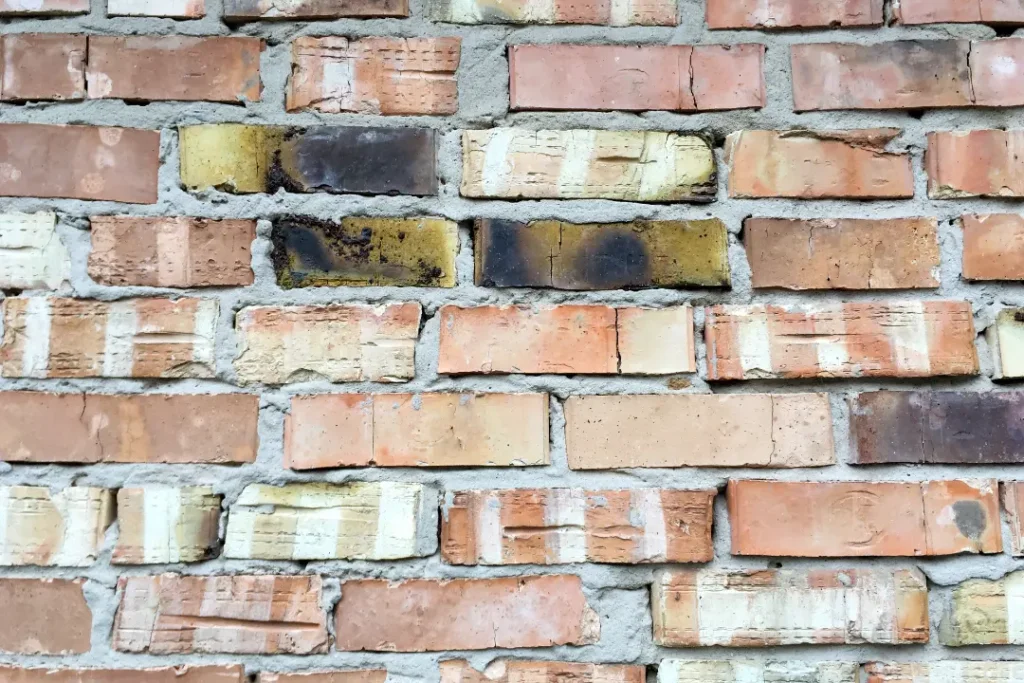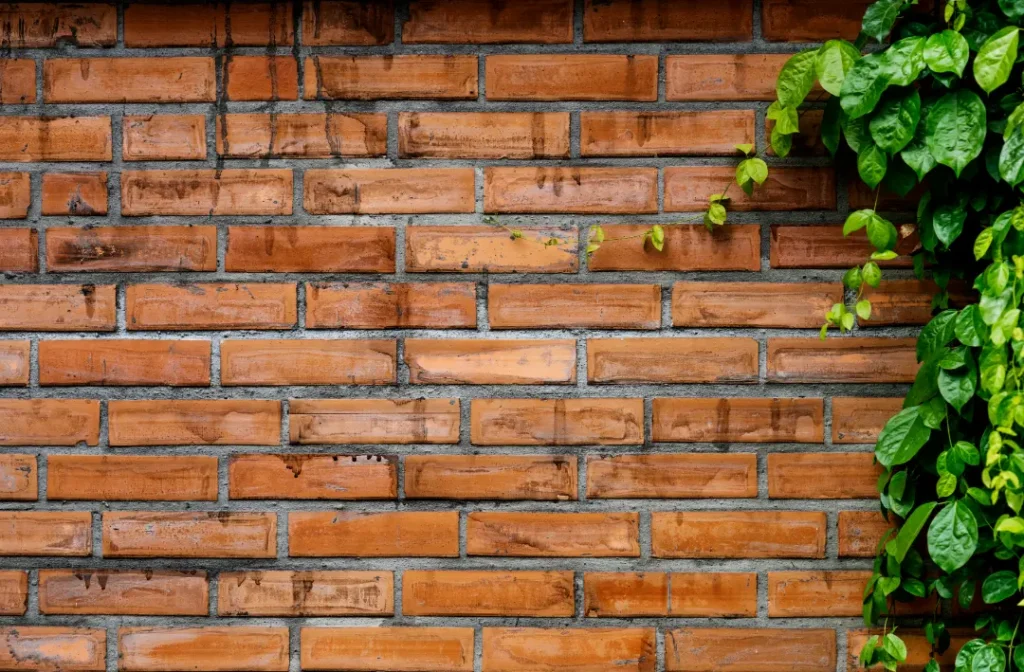Are you wondering how to stop rainwater from coming through brick walls? In this guide, we will walk you through the causes of water ingress and provide practical solutions to remedy the situation.
Key Takeaways
- Water ingress in brick walls can cause significant damage and impact home value, necessitating proper drainage and maintenance.
- Regular inspections and addressing signs of dampness, such as mould and efflorescence, are vital for early detection and prevention of water damage.
- Effective solutions to prevent rainwater penetration include repointing mortar joints and installing proper drainage systems.
What Causes Water Ingress
Water ingress occurs when water penetrates brickwork from the outside. Brick walls are especially prone to penetrating damp and can suffer severe damage if not properly waterproofed. This problem affects buildings of all ages and can significantly harm brick and masonry structures.
Improper drainage can saturate brick walls, raising the risk of water ingress. Blocked or damaged gutters can cause rainwater to overflow and seep into brickwork. Rising damp, often worsened by poor drainage and landscaping that directs water toward the building, also contributes to water ingress.
Cracks in walls and deteriorating mortar joints create entry points for water, heightening the risk of seepage. The natural porousness of bricks makes them prone to moisture absorption, which can lead to significant water damage if not addressed.

What Are the Signs of Water Ingress?
Damp patches are often the first signs of water ingress, indicating moisture within the walls. Mould growth and musty odours also suggest water penetration.
Another sign is efflorescence, which appears as white, powdery deposits on masonry and indicates water saturation.
Ignoring these visual indicators without applying suitable remedial measures can lead to further damage. Addressing these signs promptly can prevent additional water damage and maintain your home’s structural integrity, saving you from costly repairs later.
How to Diagnose Water Leakage Through Brick Walls
Diagnosing water ingress helps identify the root cause and implement effective solutions to prevent further damage. The first step includes conducting thorough inspections and assessments of brick walls.
Internal Inspection
Internal inspections involve looking for internal signs such as:
- Peeling paint and plaster damage caused by rainwater ingress
- Damp patches on walls and ceilings indicate water penetration
- Leaks in plumbing systems can help avoid moisture problems
Modern technology, like thermal imaging, can accurately detect hidden water leaks and holes. You should have a brick expert perform routine inspections to catch water damage early and identify any potential leaks.
Internal inspections are vital for maintaining your home’s structural integrity.
External Inspection
Inspecting exterior walls for cracks is essential, as they can allow water to penetrate and cause further damage.
Damaged mortar joints indicate a risk for water ingress, necessitating inspection and repair. Addressing standing water around the foundation promptly prevents water ingress into brick walls.
Penetrating damp can appear higher than 1 meter without a visible ground source, unlike rising damp, which is usually below that height. Professional assessments can pinpoint the root cause of water ingress, ensuring the best solution and effective solutions are implemented.
Solutions to Stop Rainwater Penetration
To stop rainwater penetration through your brick walls, solutions like repointing mortar joints, applying waterproof sealants, and installing proper drainage systems are generally required. These measures maintain the integrity of brick walls and prevent water ingress.

Repointing Mortar Joints
Repointing involves removing old mortar and replacing it with new mortar, restoring masonry integrity and preventing water ingress. Faulty mortar should be re-pointed with a suitable sand/cement or sand/lime mix to ensure durability against water penetration.
A mortar mix with water-repellent additives enhances the durability of mortar joints, providing long-lasting protection against rainwater. This process is essential for maintaining the structural integrity of brick walls and preventing penetrating damp.
Applying Waterproof Sealants
Applying breathable waterproof sealants to brick walls reduces moisture damage, allowing trapped moisture to escape. High-quality breathable waterproofing creams can significantly lower the risk of moisture damage in walls, ensuring a proper seal.
A waterproof membrane can mitigate the impact of rising damp on brick walls. Using waterproof sealants protects brickwork from moisture damage and ensures long-term durability. Note that this should only be used after an accurate diagnosis of the cause that necessitates using a sealant.
Installing Proper Drainage Systems
A proper drainage system, such as French drains, directs rainwater away from building foundations, especially when rain is anticipated. These systems channel rain effectively, reducing the risk of water ingress.
Regularly clearing gutters and downspouts prevents water pooling and ensures proper drainage away from the foundation. Effective drainage systems are vital for maintaining the structural integrity of brick walls.
Preventative Measures for Long-Term Protection
Preventive measures will help you avoid costly future repairs. These steps can identify potential water ingress points before they cause significant damage.
Regular Maintenance Checks
Routine inspections by a brick expert help homeowners catch water damage early. Signs of dampness, such as water stains, peeling paint, and mould, should be addressed promptly.
Preventive maintenance includes fixing cracks, clearing gutters, and repairing downpipes and pipe systems. Regular plumbing checks for leaks help prevent moisture ingress and maintain a dry home.
Gutter and Downspout Maintenance
Regular gutter inspections prevent water accumulation and damage. Clearing gutters of debris regularly is important because:
- It prevents water from pooling and seeping into walls.
- It avoids water overflow caused by clogged gutters.
- It helps prevent structural damage by maintaining proper water flow. Maintenance is essential to keep gutters functioning properly and protect the structure.
Ensuring the ground slope directs water away from the foundation prevents pooling.
Landscaping Adjustments
Excessive water retention in the soil can erode water-resistant barriers, especially around brick foundations.
Piling excessive soil around the brick foundation can lead to harmful water saturation, negatively impacting the foundation’s structural integrity.
Trimming overgrown plants reduces moisture around brick foundations, helping to prevent water ingress. You can also ensure proper soil grading around foundations, as this directs water away from brick walls, to reduce the risk of water ingress.
Why You Should Choose Professional Repointing Over Using DIY Sealants
Waterproof sealants are often advertised as quick fixes for rainwater penetration but they can do more harm than good when used alone.
Most off-the-shelf sealants form an impermeable layer over brickwork, preventing moisture escape and accelerating internal damp. Therefore, sealants should never replace structural remedies like repointing deteriorated joints, repairing cracks, or improving drainage. They are not the first line of remedies without an accurate diagnosis.
Some of our clients come to us after failed attempts with cheap silicone sprays or DIY repointing jobs using inappropriate cement mixes. These short-term fixes don’t last, and they can mask growing issues until serious damage appears.
Our inspections catch problems before they become costly, and our methods are always tailored to the property’s age, materials, and unique exposure to rain. Contact us today.
Environ Property Services: The London Experts for Brick Repointing
At Environ Property Services, we combine expert inspection with precision repairs that protect your home for decades. We offer professional lime mortar repointing.
When you hire us for this restoration service, we will remove decayed mortar by hand, assess the original mortar mix, and apply a bespoke lime mortar that is breathable, durable, and tailored to your property’s specific needs.
This will give your home a watertight wall that resists moisture, adapts to seasonal movement, and preserves the integrity of your brickwork.
With over 15 years of experience safeguarding London homes from water ingress, our director, Terry Clark, a member of The Society for the Protection of Ancient Buildings, personally oversees all major works to ensure every finish is conservation-grade.
From period homes with soft, porous bricks to modern builds experiencing rain soak-through, our services provide a reliable, long-term barrier against damp. We also offer damp proofing services.
So, if you are seeing signs of water penetration like efflorescence, cracked mortar, or interior damp patches, call us today or request a callback. We’ll inspect, report, and resolve the issue with expert care and craftsmanship.
Additional Tips for Protecting Brick Walls
Combining protective measures, proper ventilation, and maintenance ensures the integrity of brick walls. These include:
- Using breathable paints
- Addressing rising damp to protect brick walls from water ingress
- Ensuring proper indoor ventilation to mitigate moisture buildup
- Applying Stayntech® brick stains protects the brick while allowing natural evaporation.
These measures help maintain the structural integrity of brick walls.

Using Breathable Paints
Breathable paints:
- Allow moisture to escape
- Provide a protective layer against water ingress
- Reduce the risk of damage from damp by allowing trapped moisture in brick walls to escape.
Breathable paints prevent moisture accumulation within the walls and on surfaces, avoiding potential water damage and maintaining the brickwork’s structural integrity.
Addressing Rising Damp
Rising damp results from ground moisture rising through capillary action in brickwork, often worsened by heavy rain and high humidity levels. This moisture can cause damp patches on interior walls, mould growth, and a musty odour, signalling the need for prompt action.
A damp proof course prevents water from rising through the bricks. High-quality damp proofing materials and techniques effectively block moisture, protecting your brick walls’ structural integrity. Addressing rising damp promptly keeps your home dry and safe.
Frequently Asked Questions
What are the common causes of water ingress in brick walls?
Common causes of water ingress in brick walls include poor drainage, blocked gutters, cracks in the brickwork, and rising damp. Addressing these issues is crucial for safeguarding your home against moisture damage.
How can I tell if my brick walls are experiencing water ingress?
Look for damp patches, mould growth, or efflorescence on your brick walls. If you notice any of these signs, it’s essential to address the issue quickly to avoid further damage.
Why is professional help important in addressing water ingress issues?
Professional help is crucial for accurately diagnosing water ingress issues and implementing effective solutions.
Specialists can provide tailored restoration services that maintain both the structural integrity and aesthetic appeal of your property.
How often should I conduct maintenance checks on my brick walls?
You should conduct maintenance checks on your brick walls every few years and after severe weather conditions to catch and address any potential issues early. Regular inspections are key to maintaining their integrity and longevity.
Conclusion
Protecting your brick walls from rainwater penetration involves understanding water ingress, identifying its causes, and implementing effective solutions and preventative measures.
Regular inspections, proper drainage, and the proper use of waterproof sealants and breathable paints are crucial in maintaining the integrity of your brick walls.
Choosing our experienced and professional services ensures quality and reliability when addressing water ingress issues. By taking these steps, you can safeguard your home from water damage, preserving its value and structural integrity for years to come.

